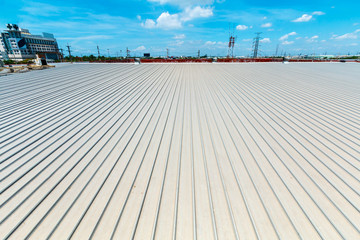The Importance of Regular Roofing Inspections
Roofing is the top layer of a building. It protects from weather, and comes in many forms, including flat, domed, and pitched. Among these different forms are combinations of materials and conditions, and some roofs are more complex than others. There are several different methods for determining the suitable Roofing material for a given project. Each type has its advantages and disadvantages, and it’s essential to consider your goals when choosing a roofing material. Listed below are some examples of roofing materials.
Roofers have the training and experience to examine a roof critically and spot small flaws. They are skilled in discerning the different types of damage caused by wind, hail, rain, and ice. Additionally, they have the skills and experience necessary to maneuver safely on the roof. This means you can trust a roofing company’s expertise and prevent costly repairs later. A roofer can identify these problems early on and prevent further damage. You will also save a lot of money by preventing costly repairs later on.
Roofing inspections should be conducted from a position on the roof. Observation from the ground can only be approximate, so it’s best to go up onto the roof. During the inspection, look for holes and cracks in various places. These are signs that your roof is failing. A hammer can be used to feel for soft spots in the wood, which indicates rot or water leaks. This is a sign that you should consider a roofing inspection.
Roofing inspectors will usually check the roof at different stages during the project to make sure everything is secure. Ensure that you have the right amount of waterproofing material for your project. You can check with your local building authority to get an idea of the weight of your roofing material. When buying roofing materials, ask the manufacturer if they recommend a certain felt weight for your roofing materials. If the weight is too much, it may tear under your feet.
Asphalt-saturated felt was the most popular roofing material until about 15 years ago, but synthetic materials have taken their place. The asphalt-saturated felt used as the underlayment is made up of varying blends of bitumen, polyester, and natural plant fibers. Unlike other materials, asphalt does not provide waterproofing. Therefore, it is best for roofs with steep slopes. However, it is not recommended for flat roofs.
Shingles come in varying prices, based on when they are shipped. The longer you wait for shingles, the higher the price will be. This may also affect installation timelines. During the fall, use lawn granules to kill moss. If you find any, make sure to measure the shingles horizontally to ensure they are properly aligned and straight. Then, apply your roofing material according to the manufacturer’s specifications.
In addition to shingles, another important factor to consider is the underlayment. Most traditional shingles have seams, and you must apply an additional layer of protection between the shingles and the house. Using roofing underlayment is a good idea if your shingles get damaged or blown off. As long as you are aware of the risks of water intrusion, this material can save you thousands of dollars over the years. You’ll be glad you did.
Several important aspects of asphalt roofing should be considered before choosing the type of material for your home. A well-applied asphalt roof can last a long time. However, it may develop blisters, which may result from improper installation. While asphalt is a durable material, it can be vulnerable to damage due to wind, hail, and rain. Therefore, if you’re looking for an asphalt roof, make sure you choose one made from a high quality asphalt.
Wooden roofs are attractive but expensive. Because of their limited lifespan and flammability, wood roofs are not recommended for regions where moisture and wildfires are prevalent. However, if you’re looking for a roof with a unique style, consider a wooden roof. Redwood and cedar are two of the most common types of wood used for roofing. The process of splitting wood into thin wedges is called “splitting” or “shingling,” and a rough texture is produced.


